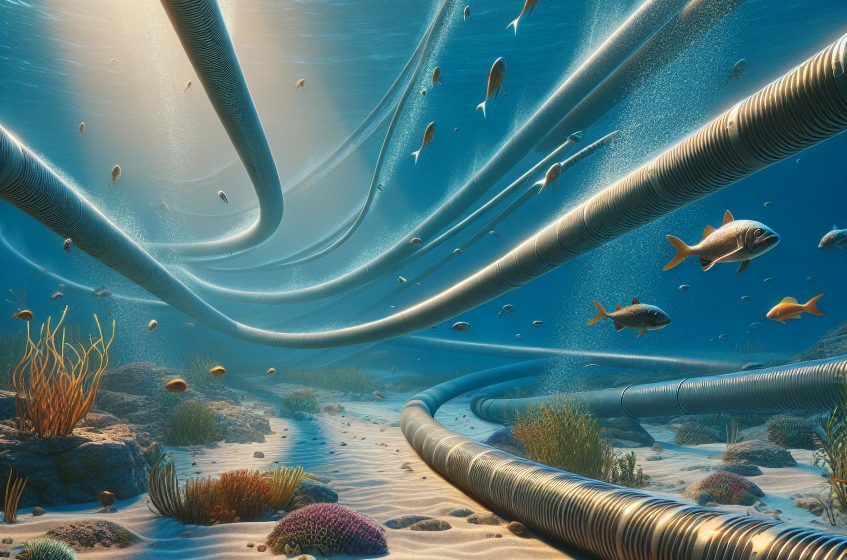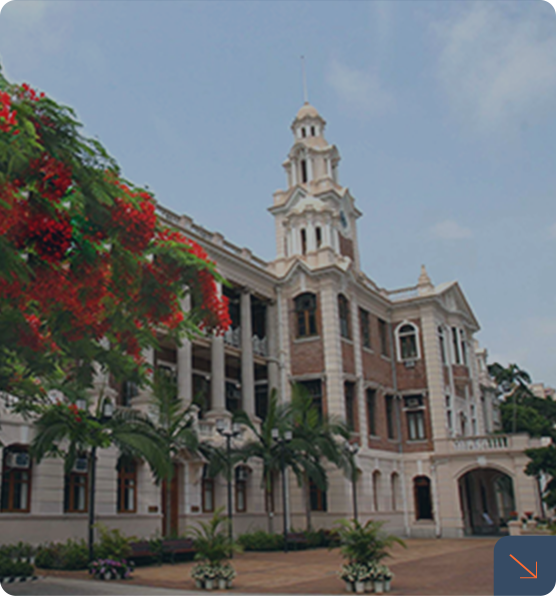
Submarine Cables – The Silk Road of the Digital Economy
Many countries are seeing a spike in demand for data transmission and submarine cables. These are a critical part in advancing digital economic development. Compared to Singapore’s 26 submarine cable systems, Hong Kong only has 12. Professor Yulin Fang and Dr. Shiqin Chen suggest that Hong Kong must catch-up in order to stay globally competitive.
Submarine cables are the cables laid on the seabed for transmitting data and telecommunication signals. These cables have become the “digital arteries” of global communications, carrying approximately 99% of the world’s intercontinental data traffic (Note 1).
It would be impossible to talk about the development and widespread application of submarine cables without mentioning Nobel physicist Charles Kuen Kao, who also served as the third Vice-Chancellor at the Chinese University of Hong Kong. Kao is widely regarded as the “Father of Fibre Optics” for his technological breakthrough in fibre optics. His research laid the foundation for highly efficient data transmission in modern submarine cables.
Fibre-optic communications technology enables submarine cables to transmit vast amounts of data, enhancing both speed and stability. The undersea cables also deliver far greater transmission distances than conventional ones. These submarine cables can transmit data across continents with extremely low loss, protecting communication and trade between different nations.
In the wave of global informatisation, there is heightened demand for transnational communications. Different countries have sharply increased their need for high-speed and stable data transmissions, further demonstrating the soaring importance of submarine cables.
With the rapid development of digital technologies such as 5G, data centres, cloud computing, artificial intelligence, the Internet of Things, and blockchain, submarine cables have become pivotal infrastructure in supporting these emerging technologies. These undersea cables provide a physical path for data transmission for an efficient integration of global computing resources. Not only do they ensure that global information flows smoothly, submarine cables also provide a solid network foundation for the world economy, cross-border trade, financial services and innovative technologies.
By connecting data centres around the world, submarine cables have become an indispensable support system for the extensive coverage of 5G networks, global deployment of AI computing power, and the distributed system that supports blockchain technology.
The Chinese government attaches great importance to the development of the digital economy. Its “14th Five-Year Plan” clearly states the need to ramp up digital infrastructure construction and intensively promote a “Digital Silk Road” (Note 2). In China’s digital economic development strategy, Hong Kong remains a key hub due to its unique geographical location, open market, and leading positions in international finance, trade, and technological innovation.
Hong Kong not only serves as a gateway for finance and trade between Mainland China and the world, but also a crucial node in global data flows. That, coupled with its international business environment and advanced telecommunication infrastructure, Hong Kong is therefore an incredibly attractive site for building global data centres.
Hong Kong currently is home to around 60 data centres, putting the city in a prominent position in the world (Note 3). When it comes to submarine cables, however, there is a considerable gap between Hong Kong and competitors like Singapore. Up until June 2024, Hong Kong had 12 submarine cable systems (Note 4), whereas Singapore had 26.
In fact, back in 2023, Singapore announced plans to double its capacity for international subsea cable landings within the next decade (Note 5). According to the China Academy of Information and Communications Technology, it forecasted that by 2030, the demand for international bandwidth will reach 26,081Tbps. This shows an explosive growth in data transmission capacity in the coming ten years (Note 1). In anticipation of this, Hong Kong must build more submarine cables to increase its international bandwidth capacity. Only then can it satisfy China’s global promotion of its digital economy.
By strengthening international network connectivity, Hong Kong can support China’s digital economy for going global, as well as provide more efficient data transmission services to countries and regions along the “Belt and Road Initiative.”
Also, as a critical node for international communications, Hong Kong’s submarine cable systems can assist China in fortifying its strategic position in global information and communication. In addition, a stable and reliable submarine cable system can protect cross-border financial transactions. Ensuring real-time nature of data is especially important in high-frequency trading and supporting international financial markets. The construction of subsea cables can improve Hong Kong’s appeal to more multinational corporations so they will see Asia as a strategic data centre hub. That, in turn, will enhance Hong Kong’s competitiveness.
Hong Kong faces multiple challenges in building and developing submarine cables. First of all, constructing undersea cables involves complex international licences and applications. This often requires coordination from a number of countries and may involve geopolitical issues.
With escalating China-U.S. competition, Hong Kong’s submarine cable projects could face sanctions and restrictions from Western countries. In 2020, the United States denied an application on Hong Kong’s undersea cable connection on the Pacific Light Cable Network, citing national security concerns (Note 6). With growing threats to global network safety, how to manage submarine cable security has become a pressing challenge. Protecting submarine cables from natural disasters, cyber-attacks, or malicious human interference is now the primary task in safeguarding data security (Note 1).
In the face of competition and challenges, Hong Kong needs to optimise the approval process of submarine cable construction, shorten the licencing cycle, and strengthen cooperation with the Mainland Chinese government and overseas administrations. At the same time, Hong Kong should draw on Singapore’s experience, improve laws and regulations on protecting submarine cables, and ensure the systems’ safety and reliability. Additionally, the creation of an open, inclusive, fair and mutually beneficial environment is necessary for the submarine cable industry to flourish. Through bolstering the construction of infrastructure such as submarine cables, Hong Kong is expected to continue playing central roles as an international financial hub and a technology innovation centre in the digital economy era.
Note 1:”Global Undersea Optical Cable Industry Development Research Report (2023)”, China Academy of Information and Communications Technology https://gdtx.oss-cn-shanghai.aliyuncs.com/gehongkai/PDF/%E4%B8%AD%E5%9B%BD%E4%BF%A1%E6%81%AF%E9%80%9A%E4%BF%A1%E7%A0%94%E7%A9%B6%E9%99%A2%E3%80%8A%E5%85%A8%E7%90%83%E6%B5%B7%E5%BA%95%E5%85%89%E7%BC%86%E4%BA%A7%E4%B8%9A%E5%8F%91%E5%B1%95%E7%A0%94%E7%A9%B6%E6%8A%A5%E5%91%8A(2023%E5%B9%B4)%E3%80%8B.pdf
Note 2:https://www.gov.cn/zhengce/content/2022-01/12/content_5667817.htm
Note 3:https://app7.legco.gov.hk/rpdb/tc/uploads/2023/ISSH/ISSH07_2023_20230525_tc.pdf
Note 4:https://www.ofca.gov.hk/tc/industry_focus/infrastructures/submarine_cables/index.html
Note 5:https://cil.nus.edu.sg/wp-content/uploads/2024/07/PR240521_Enhancing-the-Security-of-Singapores-Submaring-Cables.pdf
Note 6:http://www.iiss.pku.edu.cn/fj/PDF/ciss_cn/upload/docs/2020-11-02/doc_6001604291129.pdf
Prof. Yulin FANG
Professor of Innovation and Information Management
Director of the Institute of Digital Economy and Innovation (IDEI), HKU Business School
Dr. Shiqin CHEN
Research Associate, The HKU-Shenzhen Institute of Research and Innovation (HKU-SIRI)
This article was also published on October 30, 2024 on the Financial Times’ Chinese website







